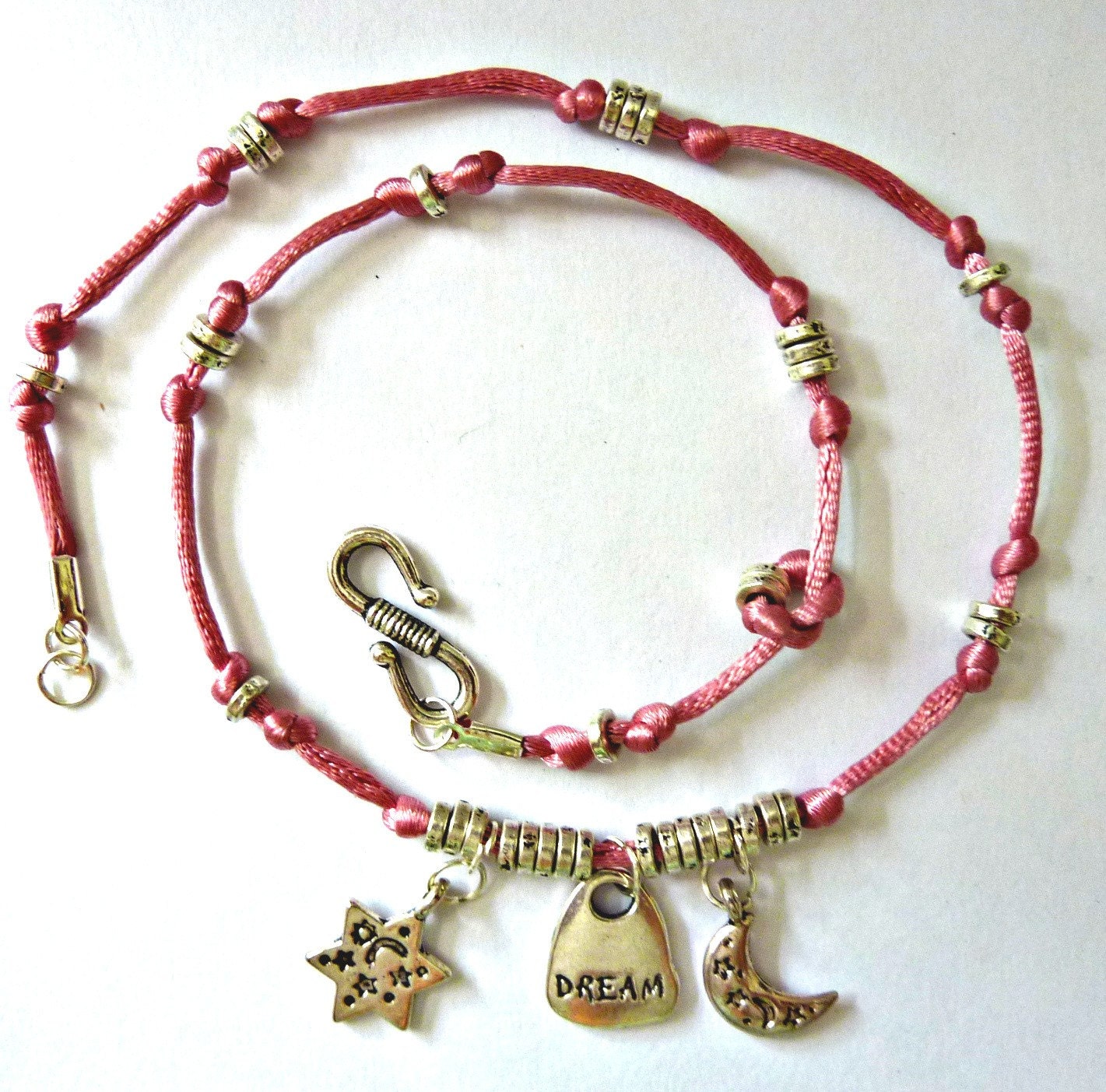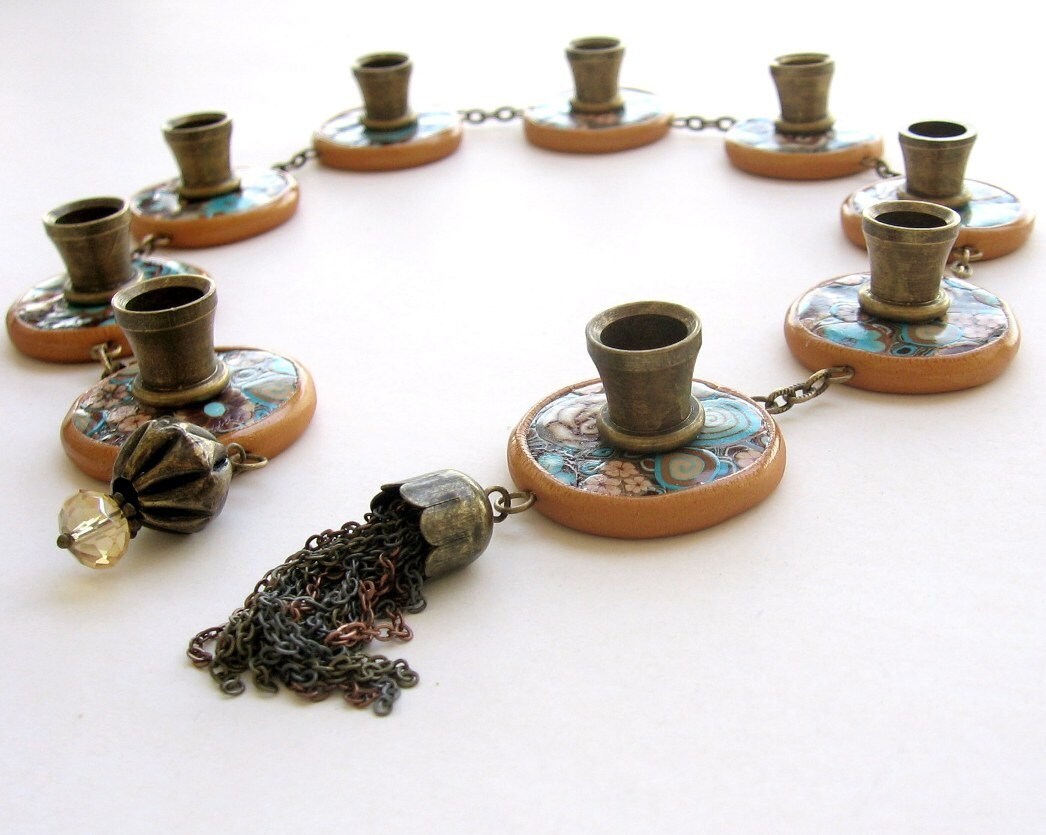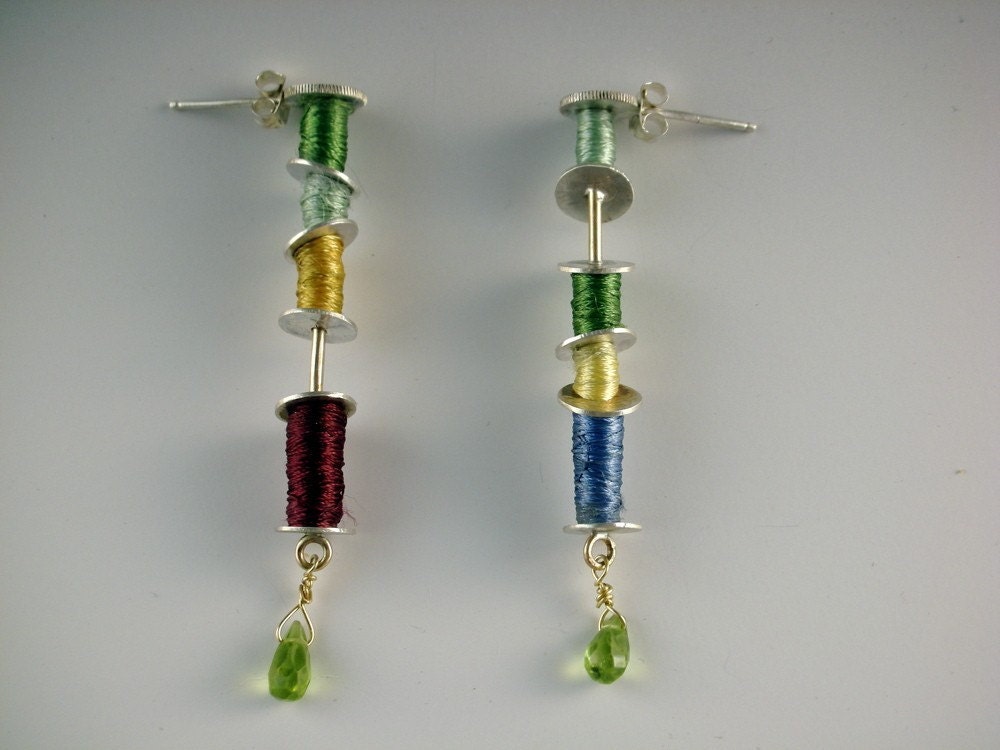In different areas, cultural traditions were added to Chanukah celebration by Jews living there. Here are a few examples of global additions to Chanukah:
Tunisia: In the North African country of Tunisia, Jews celebrate the sixth night of Hanukkah as the Girls' Festival in memory of the Jewish heroines Esther and Judith (La Fete des Filles). Both women performed their heroic deeds during the month of Tevet, so the festival was established on the first night of that month, coinciding with the sixth night of Hanukkah. Since it also coincides with the new moon it is also called the Daughters' Rosh Hodesh or, Roch Hodeceh el Bnat.
Charmed Design has this wonderful bracelet featuring a nighttime motif including the moon.
The following day (the seventh day of Hanukkah) families go to Synagogue, commemorating Biblical heroine Judith's brave acts during the period of Syrian-Greek rule. Women file past and kiss the Torah, while men study the Talmudic tractate containing the Hanukkah story.
On the night of the Girls' Festival, Tunisian girls receive different types of special pastries. Yoyos are round donuts. Makrouds are semolina pastries filled with dates and fried and dipped in a light orange flavored syrup. Debla are made of a fluffy dough fried and dipped in light orange flavored syrup. They look like ribbons and are very delicate.
Avignon, France: Following the Shabbat during Hanukkah, Jews in this Southern France town go from house to house, opening and sampling new flasks of wine.
Yemen: Children would go from house to house collecting wicks for the Hanukkah oil-based Menorah. They would sing (in Yemenite): "O father Salim, give us a present." If they received wick-ends with fruits, candies or coins, they would say "Sleep well." in Hebrew. If they didn't get anything, they would respond in Yemenite, "You miser, may your wicks be as dry as your bones!"
Though not oil-based, this unique Hanukkah menorah can be found in Visart’s shop.
Germany: German Jews used to have great bonfires after Chanukah with the leftover wicks and oil.
Israel: The 5th night of Chanukah is a solemn remembrance of the World War I expulsion of the Jews from Tel Aviv and Jaffa by the Turks. Soofganyot (jelly-filled donut holes) are the popular sweetened pastry of the season.
Turkey: On last day of Hanukkah, Turkish Jews enjoy a special meal called merenda, at which many relatives and friends gather, each bringing a portion of the food to be shared by everyone present.
Uzbekestan: Uzbeki Jews are likely to don antique silk robes -- a reminder of the Silk Route -- play the Turkish guitar called a saz and sing the monotonic melodies that Bukharan Jews say originated in King Solomon's Temple in Jerusalem.
And no Jewish holiday in Uzbekistan goes without lepeshka, large rounds of soft, chewy bread that are a cross between pizza and bialy. The bread, first cousin of the biblical flat breads baked on a disk over an open fire, is perhaps as old as the 2,500 year old Jewish lineage in Central Asia. Ancestors of that region’s Jews had migrated eastward after the conquest of Jerusalem by the Babylonians. A later wave came from Persia, trekking to Uzbekistan, a Silk Road junction between China and Persia. Most of these Jews settled in the region of Bukhara in Uzbekistan and were known as Bukharan Jews. Of the 200,000 Bukharan Jews in the world today, the great majority live in Israel, with only 15,000 still in Central Asia.
Mark Kaplan made these Silken Earrings of Lei-Tzu.
Here’s wishing you enjoyment, sweetness, and light on this upcoming Festival of Lights!
This post written by April Grunspan of AgruArts




3 comments:
thanks for this, lovely post
What a great article!
Excellent post. Very informative. It should be noted, however, that there is a significant population of Bukharian Jews in Queens, totally approximately 50,000 people at this point.
Post a Comment